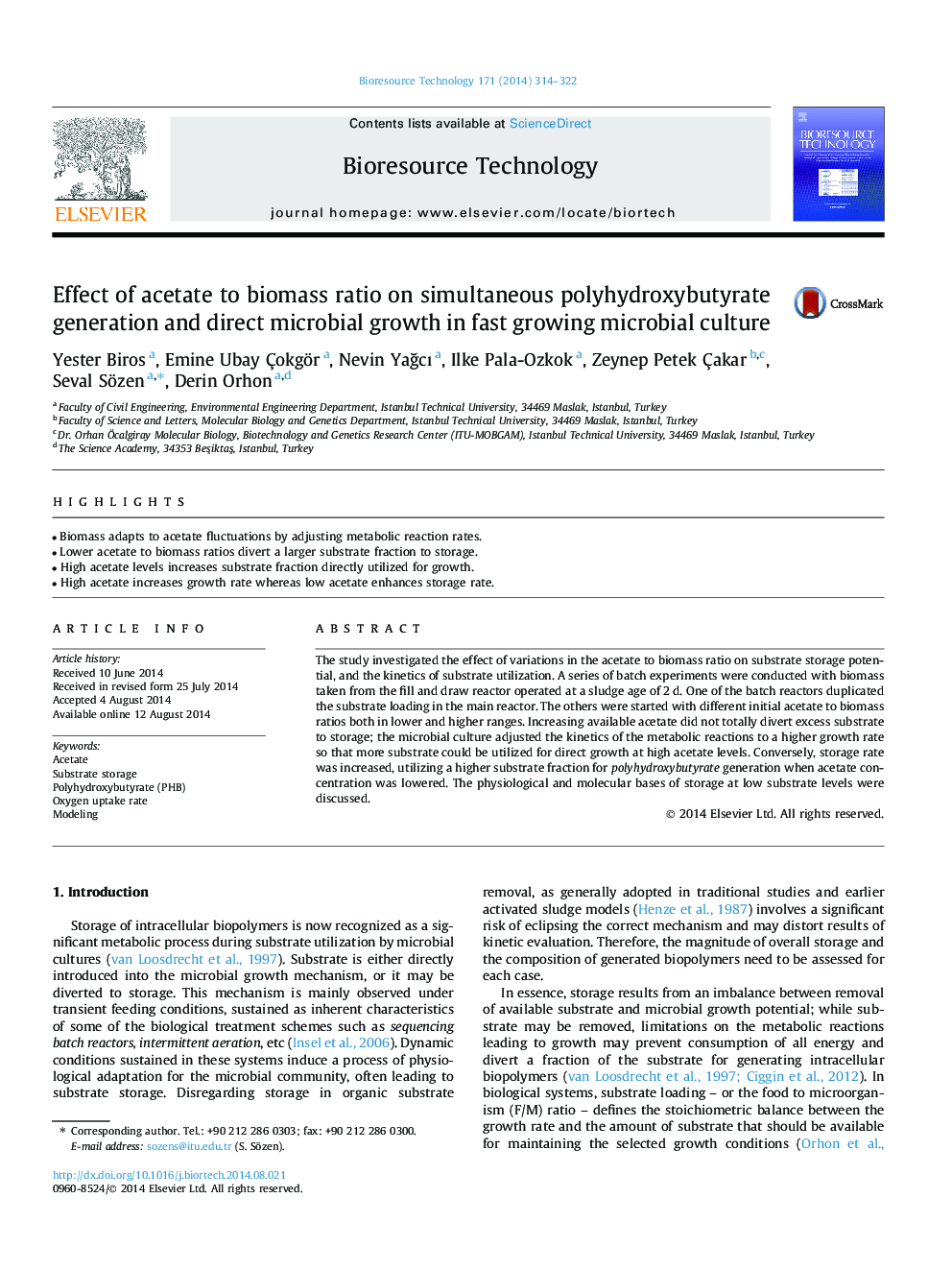| Article ID | Journal | Published Year | Pages | File Type |
|---|---|---|---|---|
| 680393 | Bioresource Technology | 2014 | 9 Pages |
•Biomass adapts to acetate fluctuations by adjusting metabolic reaction rates.•Lower acetate to biomass ratios divert a larger substrate fraction to storage.•High acetate levels increases substrate fraction directly utilized for growth.•High acetate increases growth rate whereas low acetate enhances storage rate.
The study investigated the effect of variations in the acetate to biomass ratio on substrate storage potential, and the kinetics of substrate utilization. A series of batch experiments were conducted with biomass taken from the fill and draw reactor operated at a sludge age of 2 d. One of the batch reactors duplicated the substrate loading in the main reactor. The others were started with different initial acetate to biomass ratios both in lower and higher ranges. Increasing available acetate did not totally divert excess substrate to storage; the microbial culture adjusted the kinetics of the metabolic reactions to a higher growth rate so that more substrate could be utilized for direct growth at high acetate levels. Conversely, storage rate was increased, utilizing a higher substrate fraction for polyhydroxybutyrate generation when acetate concentration was lowered. The physiological and molecular bases of storage at low substrate levels were discussed.
